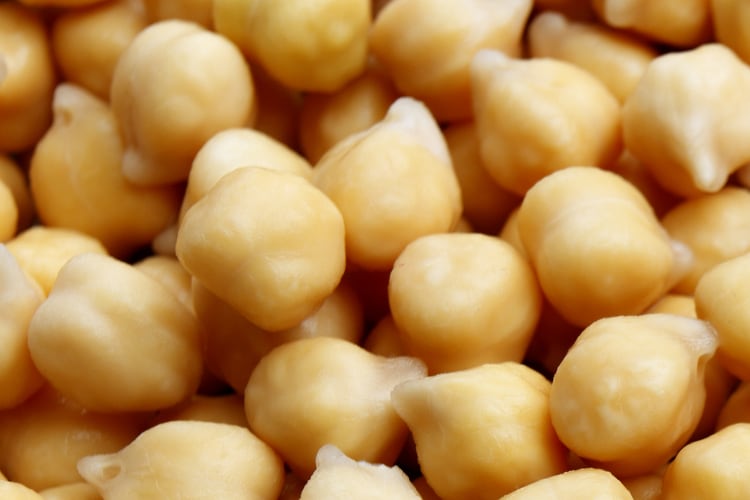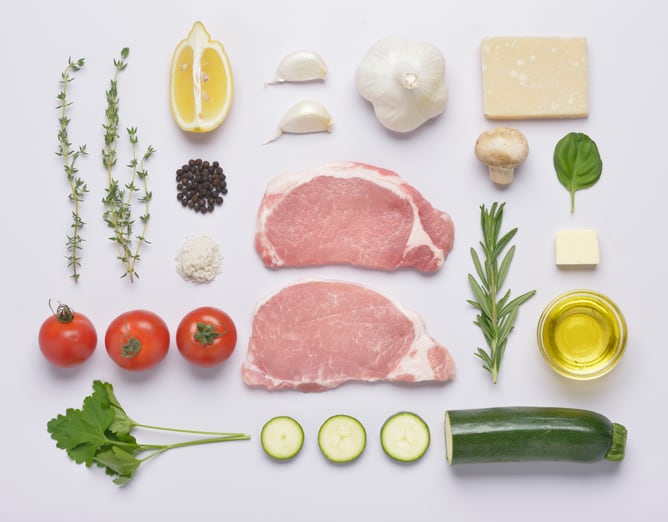PulseON Foods is a pre-seed start-up founded to promote what it believes could be a game-changing ingredient in the gut health space.
The company is built on a technology developed by researchers at Kings College London and the Quadram Institute. Industrial backing, process development and commercial translation was supported through a collaboration with New Food Innovation, an SME that works at the interface of the innovation community and the food industry, PulseON Founding Partner and Managing Director of New Food Innovation, Alan Marson, told FoodNavigator. “In collaboration with Kings College London and the Quadram Institute, we have formed PulseON Foods in order to bring a new patented ingredient technology to the market,” Marson explained.
This new technology changes how pulses such as chickpeas are processed into flour. Normally, the structural integrity of plant cell walls - dietary fibre - is destroyed during the milling process. PulseON’s IP-protected alternative to conventional milling involves ‘heat, water and physical disruption’ and uses no chemicals. Hydrothermal processing allows the separation of macronutrient-rich whole cells. The result is a flour that retains cell wall structure and shields the starch from digestion, we were told.
“Our alternative milling process weakens the links between adjacent cells before milling, which means that the cell separate from each other instead of breaking across the cells. Unlike normal flour milling, it preserves the whole cell structure that is normally found in the whole food. The cell wall naturally encapsulates the macronutrients, meaning that they are digested and released more slowly than from broken cells found in normal flour,” Marson explained.
Health benefits, from gut health to obesity and diabetes
Why is this important? Because the cell wall is kept intact, these individual macronutrient rich capsules are not broken down in the early stages of digestion, meaning that they reach the lower levels of the digestive system and feed the microbiome with nutrients that enhance the gut microflora and impact satiety.
The results of a recent human study published by PulseON founders, among others, in journal Food Hydrocolloids revealed the PulseON plant cells have low digestibility, with less than 40% of starch digested at 90 minutes. This compares to more than 80% of starch that was digested within 30 minutes in cooked pulse flours. Meanwhile, a glycaemic study in healthy human subjects demonstrated the chickpea PulseON had a low-medium glycaemic index. "Overall, PulseON powders provide superior starch resistance to normal pulse flours and their glycaemic properties show promise in functional food applications to benefit cardiometabolic health,” the researchers concluded.
The research team evaluated the incorporation of this new ingredient into white bread replacing up to 60% of wheat flour. Unlike regular chickpea flour, the cellular integrity of this new ingredient was maintained throughout bread-making and baking. It slowed the rate of digestion and reduced, by around 40%, the elevated glycaemic responses typically observed following the consumption of white bread.
“In addition to high fibre and protein foods that can be designed, we aim to support customers develop products and communicate the benefits of PulseON as an unique ingredient that can contribute to the reduction of obesity and diabetes,” Marson told this publication. “PulseON appears to contribute to appetite regulation. PulseON contributes to lowering of glycaemic effect. [It also has the] potential to modulate bio-accessibility and impact on microbiome. PulseON supports societal health at the same time as being kind to the planet,” he said.
The company says its ingredient, which is naturally rich in protein and fibre, can support the development of products that slow the rise in blood sugar rather than escalating the build of the surplus energy store. It has developed proof of concepts across various applications, Marson continued. “So far we have had success with bakery applications (bread, cake, muffins and pizza), pasta, noodles, plant-based foods, recipe dishes and sauces.”
Commercial appeal
The group recently reached a manufacturing agreement with Euro S.P.I.D. to establish commercial-scale manufacturing capability operating at BRC standards. The initial capacity stands at 1000 – 2000 tonnes per annum and is ‘readily scalable’. The technology for making aquafaba, the water by-product from chickpea processing, is also being used to produce PulseON. Aquafaba is used as a replacement for egg whites in plant-based recipes for products including vegan alternatives to mayonnaise and ice cream.
While it is ‘quite early’ in terms of commercial development, Marson says the company is in discussions with global food companies and noted it is working with commercial partner AB Mauri in the UK as well as Euro S.P.I.D. in Europe.
“PulseOn is quite unique and differs from insoluble, soluble and prebiotic fibres in its ability to deliver whole nutrient-rich cells which help stimulate the microbiome. This supports both physical and mental health. As a result of our collaboration, we have been able to successfully commercialise PulseON as a food ingredient for gut health applications in Europe and North America. Going forward, we are confident that PulseON will continue to make a significant contribution to gut health worldwide,” Marson concluded.
“We are committed to providing a nutritious, delicious product while helping to reduce the environmental impact of food producers by furthering the use of pulses and legumes, one of the healthiest and most sustainable crops we have in the food system.”
Sources
‘The impact of replacing wheat flour with cellular legume powder on starch bioaccessibility, glycaemic response and bread roll quality: A double-blind randomised controlled trian in healthy participants’
Food Hydrocolloids
DOI: https://doi.org/10.1016/j.foodhyd.2020.106565
Authors: Balazs H Bajka, Ana M Pinto, Jennifer Ahn-Jarvis, Peter Ryden, Natalia Perez-Moral, Alice van der Schoot, Costanza Stocchi, Catherine Bland, Sara E Berry, Peter R Ellis, Cathrina H Edwards




